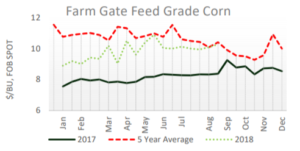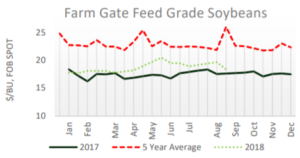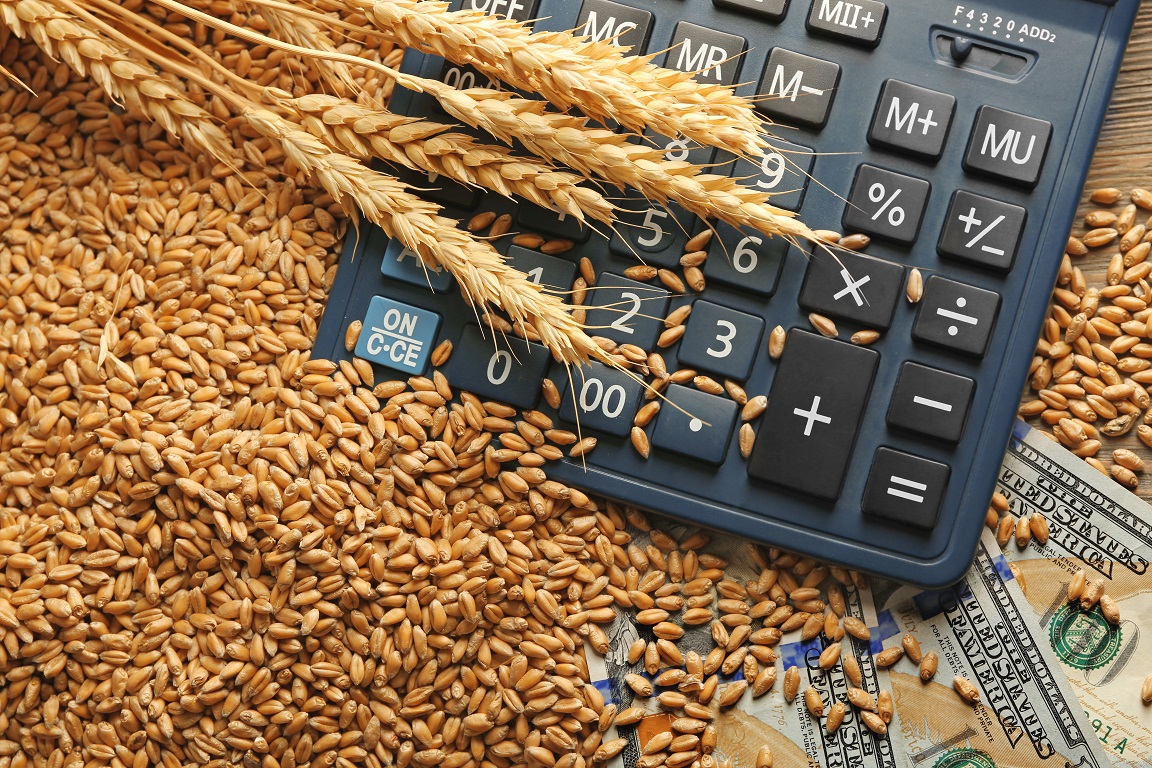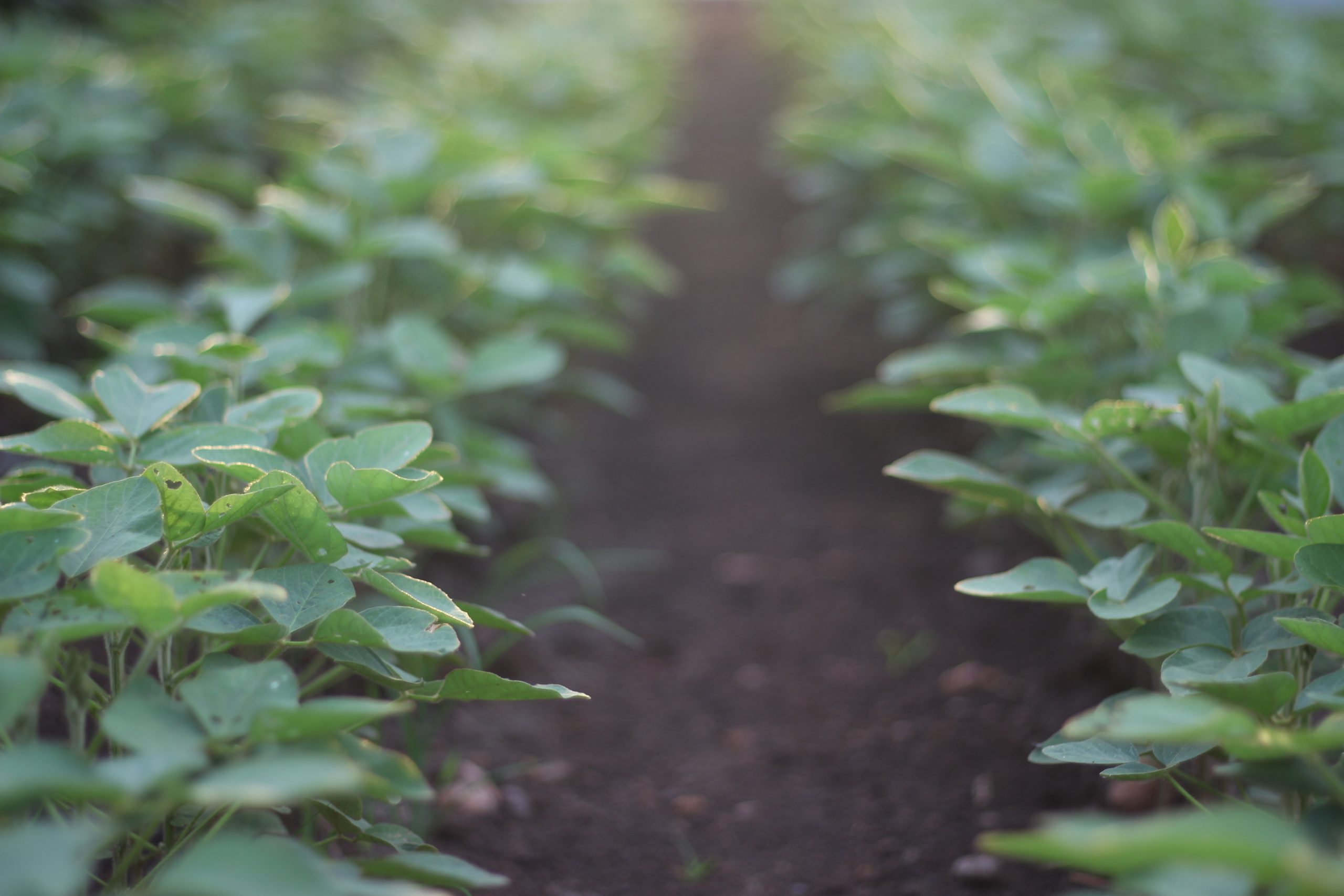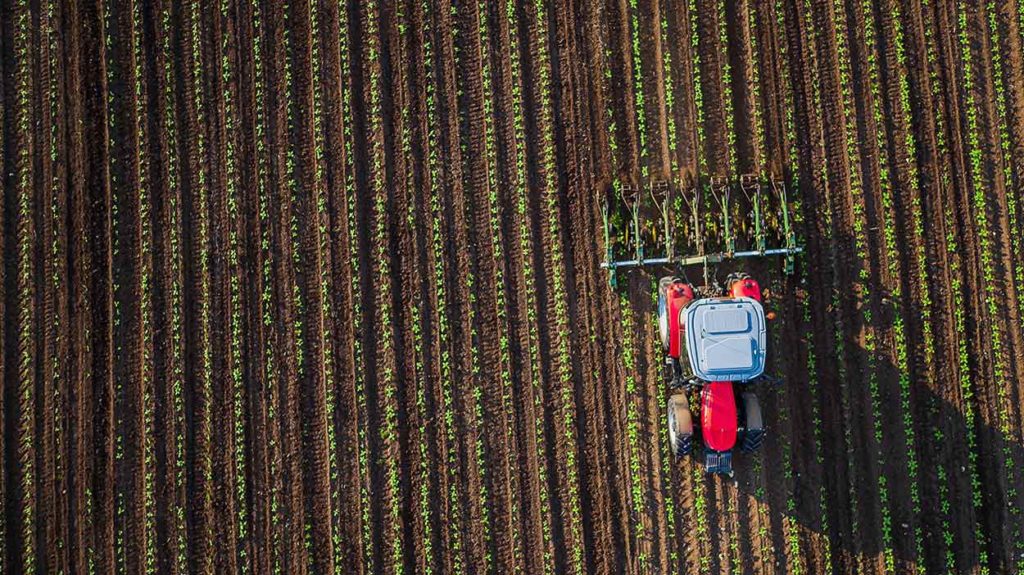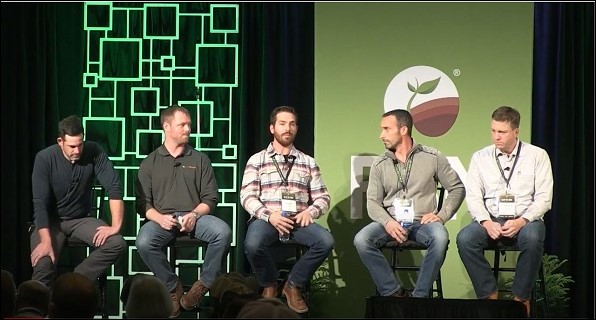- Published On: September 25, 2018
- Author: Steve Sinkula
Agronomy insights
Fall is officially here which can only mean harvest is upon us! While it is a great time to reap the rewards of your hard work, remember to keep your eyes on all the details down the homestretch.
- Monitor your crop conditions, check stalk and plant durability every few days as it can change particularly quickly during cool, wet fall weather.
- Harvest at ideal moisture levels, while you might think it’s cheaper to let your crops dry in the field it is proven that this is not the case – especially in organics. Ideal harvest moisture for corn and soybeans are 24% and 14%, respectively. You can certainly air-dry soybeans to the desired moisture; however, corn requires a sufficient amount of heat to dry it down (note: if you are growing food grade be careful with your drying process as stress can result in kernel cracks). Ultimately, harvesting with some moisture will result in considerably less harvest loss and field shrink.
- Doublecheck combine settings, make absolutely certain you are not losing grain out the back of your combine. If you are, get a technician to help you with adjustments. Want to check? Once you have your combine set perfectly, stop, raise your chopper, and windrow everything out the back for about 50 feet. It will allow you to examine everything coming through your machine in a condensed area. It only takes 10 minutes and will provide a significant reward if you need to make any final adjustments.
- Make sure everything is clean. It is critical to ensure that contamination does not occur so please follow the guidelines on clean-outs, border segregation, labeling, and inspections in great detail. Make sure bins, combine, semis, wagons, grain carts, augers, and anything else that will touch your crop are clean of any foreign material. This is the only way to ensure your grain will not be contaminated. If custom work is being performed for your harvest, make sure each operator/owner signs an affidavit.
- Treat your bins with OMRI approved products, if needed. If you have any kind of weevil or bug infestation make sure to treat your bin with approved OMRI grain products, such diatomaceous earth, to eliminate the pest (please check with your Account Executive or certifier prior to product application).
- Storing grain for more than 60 days? If so, core your bins within 14 days from filling to remove any hotspots and ensure proper airflow.
- Be SAFE and Be CAREFUL!
Please contact your Account Executive if you have any questions or concerns. Everyone at AgriSecure hopes the above tips help you have a successful and profitable fall harvest.
Market update
Markets are transitioning out of old crop and into new crop with the commencement of harvest. Unfortunately, northwest Iowa and southwest Minnesota are ending the farming season just as it started …extremely wet. In fact, areas in the region received over 8.5” of rainfall in a matter of two days. Conversely, Nebraska has seen very favorable conditions including a stretch of 6 days with some areas receiving near ideal drying temperatures of over 90 degrees. Overall, the 2018 organic harvest conditions are leaning towards extremely favorable. As a result, prices are softer right at harvest with new crop feed grade yellow corn being $.025 – $0.75 lower than current old crop values.
The current outlook projects premiums for holding onto your grain longer – the trajectory is usually incremental. Current forecasts are pointing towards a $0.15 – $0.35 premium for yellow feed grade corn in January (vs. October), with even higher premiums as we reach late spring / early summer selling windows.
FSA Reimbursement Program: The Farm Service Agency (FSA) offers a reimbursement of up to $750.00 to assist with expenses having to do with certification / inspection. Stop in to your local FSA office with your receipts and your certificate to fill out the reimbursement necessary paperwork.
U.S. organic corn and soybean prices
(USDA National Organic & Feedstuffs Report, September 12, 2018)
Related Articles
-
Imports Have an Impact on Organic Crop Prices: Here’s Why
Organic soybean prices are skyrocketing. The Jacobsen reported that prices were up to $32 per bushel in the Midwest in May 2021. What’s behind this impact on organic crop prices? And why aren’t organic corn premiums keeping up? In short: it’s all about supply and demand, especially imports, says David Becker. David is an analyst […]
-
New Options Offer Farm Loans for Organic Transition
If securing farm loans for organic transition feels daunting, we have some good news. It’s not as hard as it used to be. In fact, there’s a number of new options that could provide a solution for you and your operation. Traditional lenders, farmland investors, non-profits, and even big food companies are starting to create […]
-
Organic Farming Loans Support Growers during Transition
Ask a farmer what’s keeping them from transitioning to organic row crops, and you may be surprised to hear a common answer. Finances. It’s often a struggle to find organic farming loans tailored to their needs. Yes, organics offer excellent premiums and can bring long-term profitability. But first you have to get through the 36-month […]
-
Organic Breakevens: What to Know and How to Calculate
If you’re thinking about organics, you’ve probably debated whether it’s going to pay off — literally. Yes, the price premiums are good, but you’ve heard your yields will take a hit. How can you predict profitability? The answer: calculating your organic breakevens. What are an organic breakevens? Simply put, it’s a way to calculate what […]
-
Know Your Numbers to Push Crop Profitability
Yield is often the top priority in farming. The truth, though, is that the highest yields will not necessarily result in the highest ROI. And this is especially the case for organic production. We know good execution results in the best yields, but the best way to maximize your crop profitability is to know your […]
-
6 Ways to Protect Organic Profits in Uncertain Times
Economic uncertainty hits all sectors of the agriculture industry, including organics. The good news? It’s possible to safeguard your organic profits. For a start, it’s even more important for organic farmers to focus on executing their operations really well. The better the execution, the better you can weather the market conditions and remain profitable. Here […]
-
5 Steps for Financing the Transition to Organics
Profits. They’re one of the primary reasons farmers decide to move into organic production. Financing the transition to organics, though, can be one of your biggest hurdles. That’s why the support of a banker or ag lender can be a lifeline for farmers looking to get into organics. The right backing helps you build an […]
-
4 Keys to a Strong Organic Fertilizer Strategy
Questions about an organic fertilizer strategy are common in organic farming. How do I provide enough nutrients? In particular, nitrogen. How do I manage my crop and soil without using synthetic fertilizers? Fertilizer can come from a variety of organic sources, including animal waste, decomposing plants, and nitrogen-fixing crops like soybeans and clover. So it’s […]
-
Consider Organic Farming? Yes.
With so much economic uncertainty caused by the COVID-19 pandemic, you may be wondering: Is now the right time to transition into organic crop production? Is this the right time to increase the number of organic acres you’re already farming? My answer, yes. Current market conditions, falling commodity prices for conventional crops and somewhat lower […]
-
80 Million Millennials Can’t Be Wrong: Farmer Panel
80 million millennials are a part of the driving force behind the rapid growth of organic food demand. So why aren’t more farmers transitioning into a system that sees premiums of 2x over conventional and profitable margins? In a panel that took place at FBN’s Farmer2Farmer V event, AgriSecure co-founder and organic farmer Bryce Irlbeck […]
Get in the know
Our newsletter, it’s a quick read. You’ll get industry news plus all the latest organic insights. Who doesn’t want that?
